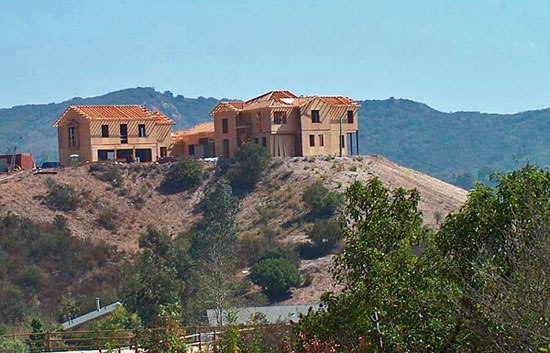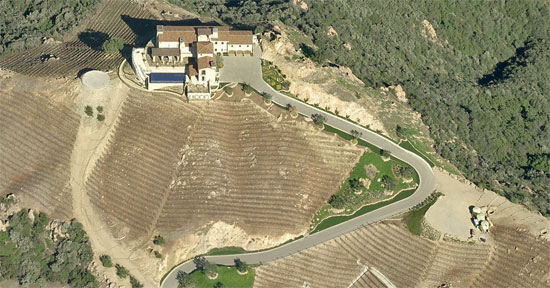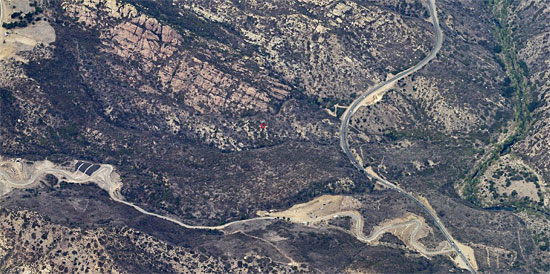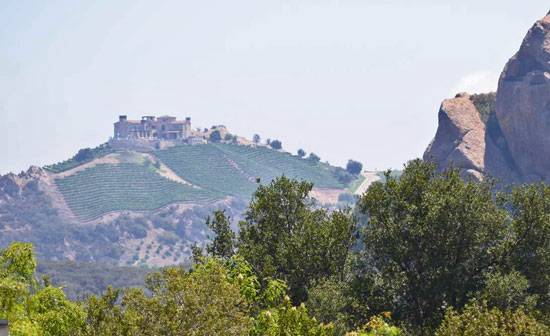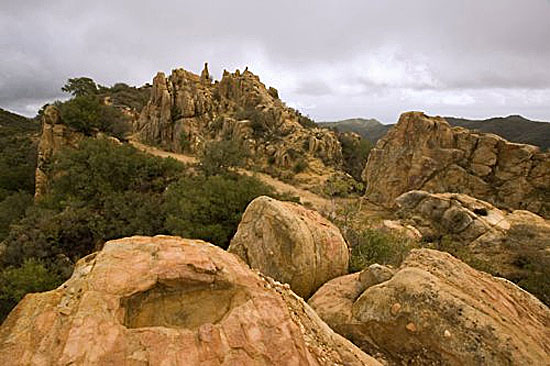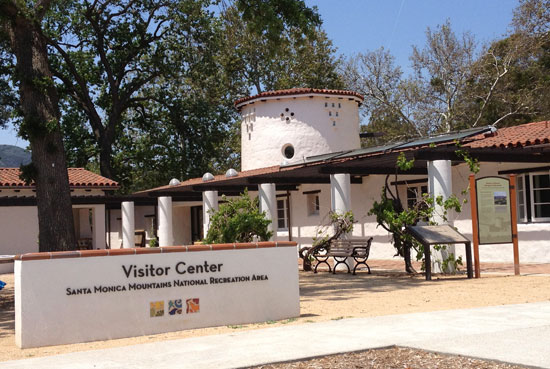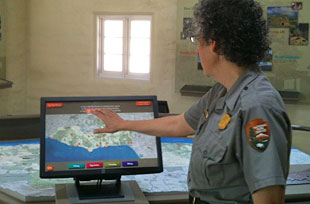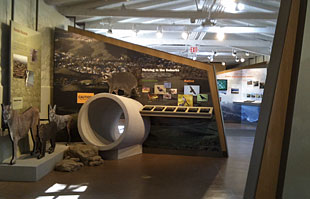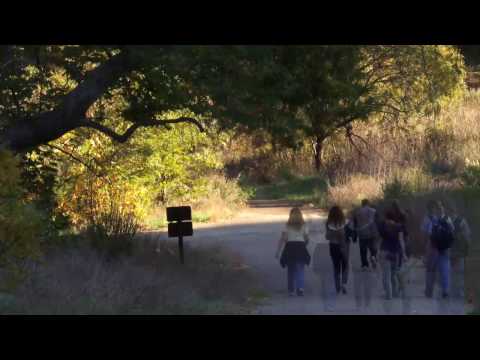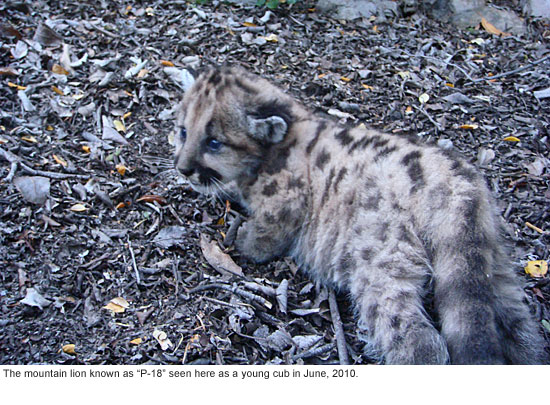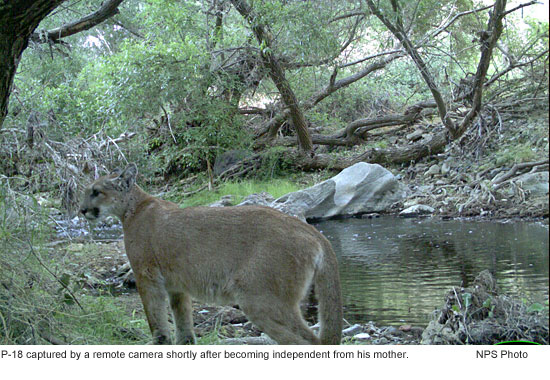A peak accomplishment
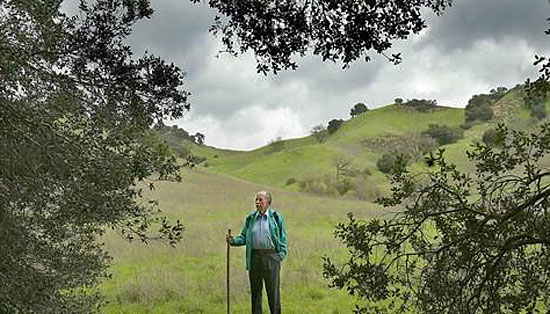
Milt McAuley’s love of the Santa Monica Mountains may be returned with a peak named in his honor.
Milt McAuley’s fingerprints are all over the Santa Monica Mountains. Soon, his name could be on one of the range’s most visible peaks.
Acting on a motion by Supervisor Zev Yaroslavsky, the Los Angeles County Board of Supervisors voted Tuesday to write the United States Board of Geographic Names in support of changing the name of Peak 2049 to “McAuley Peak.”
The motion is the latest boost to a campaign championed during the past several years by West Hills resident and avid hiker Coby King, who had long felt a special connection to McAuley. Before venturing onto a new trail, King would turn to McAuley’s landmark guidebook, Hiking Trails of the Santa Monica Mountains.
“Most hiking guides are really straightforward,” King said. “But his guidebook, you could hear his voice coming through in every hiking description. You could tell that the guy had a personality and that he loved the mountains.”
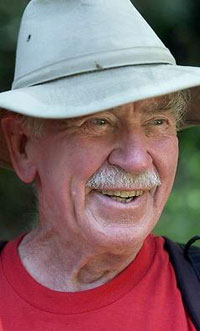
McAuley led group hikes into his 80s.
McAuley also authored and self-published other reference materials on the mountains, including a wildflower guide and a guide to the popular Backbone Trail, which transects the range from East to West and which he helped plot. McAuley’s books and advocacy for public acquisition of land in the Santa Monica Mountains drew scores of people to the area and generated a groundswell of support to protect the mountains from development.
Although King never met the conservationist, he said he did hike “just about every peak” in McAuley’s book. When the author died in 2008, King was moved to action.
“I felt like he deserved some kind of recognition for all that he had committed to the mountains,” King said. Out of all the hikes to peaks in his guidebook, “2049 was the only one that didn’t already have a name.”
The peak is situated right next to the Backbone Trail and is crested by a large sandstone rock visible for miles. King said the peak is an appropriate monument to a man whose work still looms over the mountains. Since applications to name geographic landmarks can’t be filed until five years after the person’s death, King, who serves as chairman of the Valley Industry & Commerce Association, used his government expertise to start building a case.
After securing the blessing of the McAuley family, he garnered support from elected officials and worked with environmental groups like the Sierra Club, which began calling the site McAuley Peak in their materials.
King is hopeful that the U.S. Board of Geographic Names will quickly approve the application so that the new designation will become official sometime next year. And that’s good news to the many friends and former associates of McAuley, who believe his contributions warrant the honor.
Jim Hasenauer met McAuley in the 1980s when he and some fellow mountain bikers were trying to convince local trail managers to allow them to use the trails. Some of the hikers were resistant, but McAuley—whom Hasenauer described as a gentle giant—was welcoming.
“He felt that people needed to experience the trails, sights, vistas, flora and fauna of the area and then we would appreciate it and die protecting it,” Hasenauer said, adding: “To go on a hike with him was like going to a graduate seminar in mountain ecology.”
Ruth Gerson, who worked with McAuley on the Santa Monica Mountains Trails Council and serves as the organization’s current president, said he was instrumental in naming trails and opening them up for public use. “He was a wealth of knowledge in the mountains,” Gerson said. “There was nobody that disliked him. And he could out-walk anybody—even in his late 70s.”
Bill McAuley, Milt’s son, said he’s never hiked the peak that could soon be named in his dad’s honor. But he certainly intends to hit the trail when, hopefully, McAuley Peak becomes a reality.
“I see the names in the Sierras and they’re all people who had something to do with the mountains,” Bill said. “He really did have a lot of influence.”
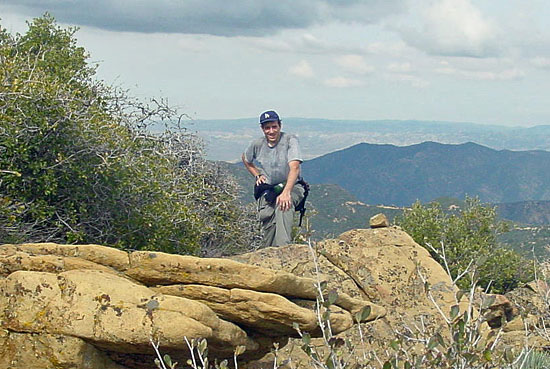
Hiker Coby King led the campaign to have Peak 2049 named after McAuley.
Posted 9/11/14

